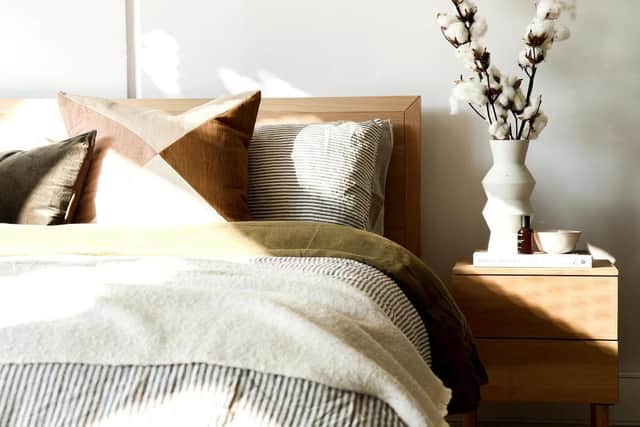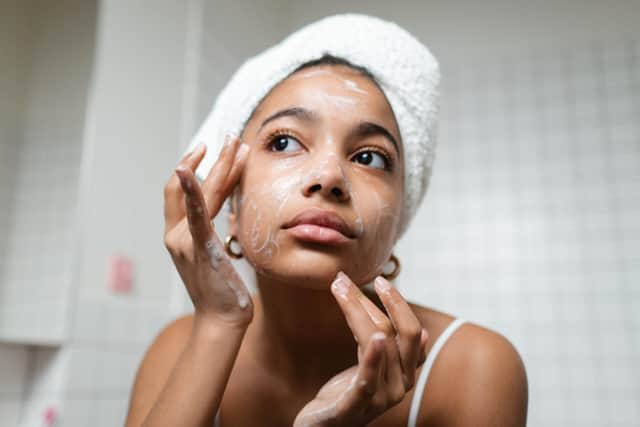6 Hay fever hacks: how to reduce pollen in your home with expert tips for reducing hay fever symptoms
This article contains affiliate links. We may earn a small commission on items purchased through this article, but that does not affect our editorial judgement.


For those dreading spending the weekend complaining about sneezing and sore eyes, we've spoken to experts on how to 'pollen-proof' your home and minimise the effects of pollen while indoors, with advice on cleaning, skincare and even pet grooming.
Starting to feel a little sneezy? According to the Met Office, pollen season typically runs from March to November in the UK so the pollen count is set to rise over the upcoming months.
Advertisement
Hide AdAdvertisement
Hide AdWhile outdoors we expect to need plenty of tissues and antihistamines, staying inside doesn’t necessarily mean a sneeze-free zone. That’s why we’ve spoken to interior, skincare and pet experts to offer up some handy tips on how to reduce pesky pollen in our homes and keep symptoms at bay.


Read on to see how to make your pad as pollen-free as possible…
1. Keep windows and doors closed
With the weather now getting warmer by the day, it can be tempting to open all the windows and doors in the house to cool down. Whilst this may seem like a simple bit of sweet relief during the lighter hours, it can be hazardous for those who suffer from hayfever. The more windows that are open, the more pollen gets blown in and dusted all over your decor.
Adam Pawson, Head of Digital at Safestyle, said: “Keeping windows and doors closed is one of the easiest and most effective ways to minimise the amount of pollen entering your home. If you do need to open windows, try to do this overnight when the pollen levels are much lower and close them again once you wake up.”


2. Up the frequency of light cleaning
Advertisement
Hide AdAdvertisement
Hide AdHelen O’Connor, Product Manager at 247 Blinds, also suggests that you should regularly dust your blinds during peak pollen season. She said: “Ideally, you should clean your blinds once a month to get rid of any dust or pollen that may be lingering on the surface. If you have roller blinds or roman blinds, just give them a soft dusting and gentle vacuum once a month.
“Venetian blinds or plantation shutters can have a more thorough clean. Wipe down each slat using a damp cloth and some washing up liquid, then finish up with a quick dusting to ensure they’re pollen-free!”
3. Stay on top of laundry


Washing your bedding is essential for any time of the year, but during the spring months it’s especially important. Washing your bedding once a week will help reduce trapped pollen sticking to your linens, as well as sweat from the increasingly warmer nights.
Lucy Ackroyd, Head of Design at Christy, advises: “Choose a cool bed linen made with blended anti-allergy hollowfibre and microfibre to minimise the buildup of dust mites.
Advertisement
Hide AdAdvertisement
Hide Ad“To eliminate allergens, put your bed sheets on a hot wash at least once a week. If you suffer from heavy night-sweats due to your hayfever or allergies, make sure you change your bedding at least twice a week to keep your fabric feeling clean and fresh.”
It’s also important to regularly wash your clothes and change your outfit after a long day of lounging outside - you don’t want that pollen coming home with you!
4. Be mindful of your mattress
Suffering from sneeze-filled snoozes? Keeping your bedroom clean and tidy always helps aid our sleeping habits, but when it comes to tackling hayfever, it really can make all the difference. Your mattress can be home to a range of bacteria and dust mites that can really set off your allergies.
Director at bed specialist Time4Sleep, Jonathan Warren said: “If you’re looking to reduce allergic reactions in the home, choosing the right mattresses is key. The inner cavities of coil spring mattresses can provide a home for dust mites as well as skin cells and mildew which can trigger allergies.
Advertisement
Hide AdAdvertisement
Hide Ad“It’s better to opt for a mattress with a solid core such as memory foam or latex so that there is reduced space for allergens to hide!”
5. Remove pollen from your skin
While you may change your clothing when you return home, it is just as important to remove any traces of pollen from our skin too.
Mia Moseley-Smith, skincare expert at skincare retailer Face the Future advises: “If you struggle with seasonal allergies, it’s important to cleanse the skin as soon as you can to help minimise symptoms.
"If you are wearing makeup or SPF you should double cleanse, starting with a micellar cleansing water to initially remove the majority of makeup and SPF from the skin, before following with a gentle cream or gel cleanser to fully clear your pores of dirt. Finish by spritzing your face with a hydrating mist to cool the skin and lock in moisture with a fragrance-free moisturiser.”
6. Brush your pet’s hair daily
Advertisement
Hide AdAdvertisement
Hide AdIf your house is also home to a furry friend or two, you may find that your symptoms fail to reduce even when inside.
Catrin George, Animal Wellbeing Content Writer at pet insurance provider, Animal Friends Insurance said: “With dogs frequently going outside, they are prone to bringing in pollen which sticks to their fur. This means giving your dogs a thorough daily, or even twice daily, brush key in helping you deal with symptoms of hay fever.
“It’s also not commonly known that dogs themselves can also suffer from seasonal allergies and actually share some symptoms with us, including sneezing and watery eyes. So brushing your dog regularly will not only help yourself, but also can help reduce the impact of pollen on our pets too.”
To find out more visit:
Safestyle: https://www.safestyle-windows.co.uk/247 Blinds: https://www.247blinds.co.uk/Christy: https://www.christy.co.uk/Time4sleep: https://www.time4sleep.co.uk/Animal Friends: https://www.animalfriends.co.uk/Face the Future: https://www.facethefuture.co.uk/